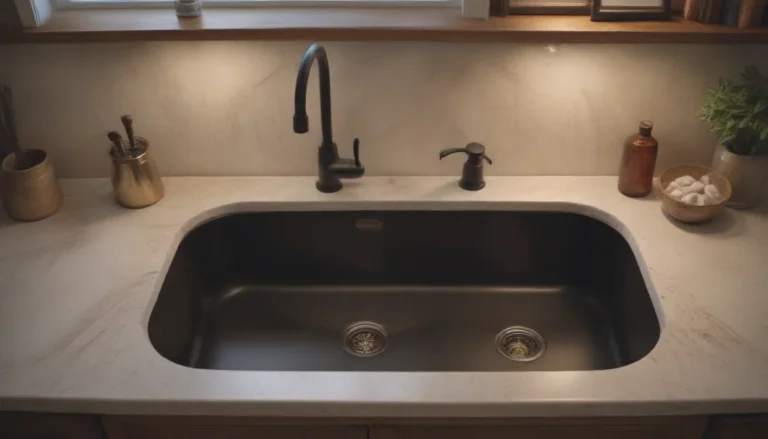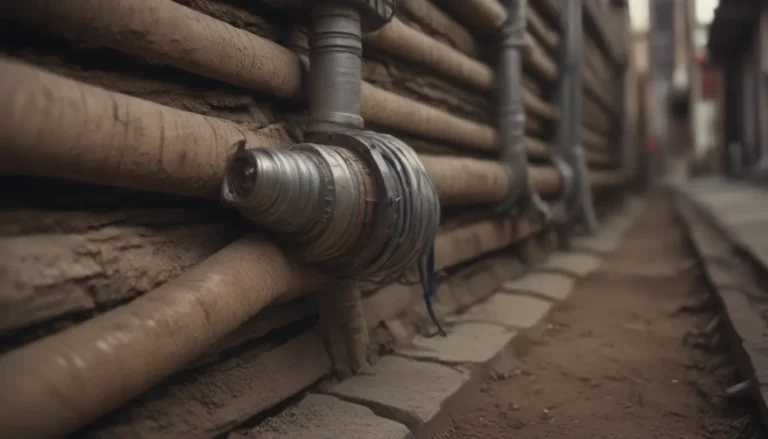Understanding the Sink Aerator: Its Importance and How to Replace It

Have you ever wondered what that small, mesh screen disk at the tip of your kitchen or bathroom faucet is? That handy little device is called a sink aerator, and it serves a crucial role in creating a smooth, consistent stream of water. In this comprehensive guide, we will delve into the world of sink aerators, exploring their purpose, benefits, and how to replace them. So, grab your favorite beverage, sit back, and let’s dive into the fascinating world of sink aerators.
What Is a Sink Aerator?
A sink aerator is a small, round attachment that can be screwed onto the tip of a faucet. Its main function is to mix water with air, creating a more controlled, splash-free water stream. This simple device plays a significant role in improving the overall performance of your faucet by regulating the flow of water. Most standard faucet aerators limit the water flow to around 1.8 to 2.2 gallons per minute, reducing water consumption without compromising on performance.
The Evolution of Faucet Aerators
The concept of faucet aerators dates back to the late 1940s when they were introduced as add-on devices to reduce splashing and enhance water quality by introducing oxygen. The idea stemmed from the observation of water bubbling from a waterfall, leading inventor Elie Aghnides to realize the importance of air in water quality. Fast forward to today, sink aerators have become a standard feature in most kitchen and bathroom sinks, promoting water conservation and efficiency.
Why Does Your Sink Have an Aerator?
The primary purpose of a sink aerator is to create a smoother water stream by mixing air with water. Contrary to popular belief, a sink aerator is not a filter, though it may inadvertently capture some grit or scale. The aerator simply needs to be screwed onto the end of the faucet to function effectively. Additionally, some aerators feature a flow restrictor disk in the center, allowing you to save water while maintaining optimal water pressure.
Sink Aerator Benefits:
- Promotes water conservation
- Reduces splashing
- Enhances water quality
- Improves water stream consistency
Where Not to Install a Sink Aerator
While sink aerators offer numerous benefits, there are certain applications where they may not be suitable. In situations where a higher water flow rate is desired, installing a sink aerator can be counterproductive. Additionally, in industrial or commercial settings where water flow needs to be at its maximum, a sink aerator may hinder performance.
How to Replace a Sink Aerator
If you ever find yourself needing to replace a sink aerator, fear not! The process is simple and can be done with just a few tools. Here’s a step-by-step guide on how to replace a sink aerator:
- Clean the Faucet: Use a towel to clean the inside thread of the faucet.
- Check the Aerator: Before installation, ensure that the aerator is fully assembled with the washer in place.
- Position the Aerator: Place the aerator into the end of the faucet until the threads catch.
- Screw on the Sink Aerator: Manually screw the aerator clockwise firmly into the faucet.
- Tighten the Sink Aerator: Wrap a towel around the faucet aerator and tighten it with a wrench.
- Test the Faucet: Turn on the water at full volume to test the new aerator.
Tip:
If water leaks around the aerator, it might not be tight enough. Avoid over-tightening to prevent damage to the threads on both the faucet and aerator.
How to Clean a Faucet Aerator
To maintain the performance of your sink aerator, it’s recommended to clean it once or twice a year. Here’s a simple guide on how to clean a faucet aerator:
- Remove the Aerator: Unscrew the aerator from the faucet tip.
- Soak in Vinegar: Place the aerator in a bowl of vinegar and let it soak for a few hours to remove any mineral buildup.
- Scrub the Aerator: Use a brush to scrub any remaining residue from the aerator.
- Reassemble and Install: Once clean, reassemble the aerator and screw it back onto the faucet tip.
By following these steps, you can ensure that your sink aerator continues to operate efficiently and provide you with a smooth, consistent water stream.
In conclusion, sink aerators are small yet essential components of our daily lives, impacting water conservation and quality. By understanding their purpose and benefits, you can make informed decisions on when to install or replace a sink aerator. So, the next time you see that mesh screen disk on your faucet, remember the valuable role it plays in enhancing your water experience. Happy aerating!





